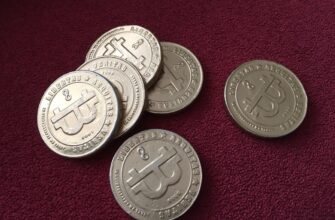- Why a 15-Minute DCA Strategy Works for Ethereum on OKX
- Step 1: Set Up Your OKX Account
- Step 2: Configure Your 15-Minute Trading View
- Step 3: Calculate Your DCA Parameters
- Step 4: Execute 15-Minute DCA Entries
- Step 5: Risk Management Protocol
- Step 6: Monitor and Optimize
- FAQ: 15-Minute Ethereum DCA on OKX
- Why 15 minutes instead of daily DCA?
- How many trades per day should I execute?
- Does OKX charge fees for frequent DCA trades?
- Can I automate this strategy on OKX?
- What’s the optimal ETH amount per trade?
- Maximizing Your ETH Accumulation
Why a 15-Minute DCA Strategy Works for Ethereum on OKX
Dollar-cost averaging (DCA) minimizes volatility risks while accumulating Ethereum (ETH). Pairing this with OKX’s advanced trading tools and a 15-minute timeframe creates a precision strategy for active traders. This approach smooths entry points, capitalizes on micro-trends, and leverages OKX’s low fees—ideal for navigating Ethereum’s fast-paced market without constant monitoring.
Step 1: Set Up Your OKX Account
- Register on OKX and complete KYC verification for full trading access
- Enable two-factor authentication (2FA) for security
- Navigate to the ‘Trade’ section and select ETH/USDT spot trading pair
Step 2: Configure Your 15-Minute Trading View
- Click the timeframe selector and choose ’15m’
- Add EMA (Exponential Moving Average) indicators: EMA 9 and EMA 21
- Set up RSI (Relative Strength Index) with a 14-period setting
Step 3: Calculate Your DCA Parameters
- Determine your total investment amount (e.g., $500 weekly)
- Divide into 28 micro-investments (7 daily sessions x 4 trades/day)
- Set fixed buy amounts (e.g., $17.86 per 15-minute entry)
Step 4: Execute 15-Minute DCA Entries
- Buy when EMA 9 crosses above EMA 21 (bullish signal)
- Confirm with RSI below 60 (avoid overbought conditions)
- Place limit orders 0.5% below current price for better fills
- Repeat at 15-minute intervals during active trading hours
Step 5: Risk Management Protocol
- Set stop-loss at 2% below entry for unexpected drops
- Diversify entry times across Asian, European, and US sessions
- Never allocate more than 5% of capital to a single entry
Step 6: Monitor and Optimize
- Review performance weekly using OKX’s portfolio tracker
- Adjust EMA/RSI parameters if volatility changes significantly
- Rebalance if ETH exceeds 30% of your total crypto portfolio
FAQ: 15-Minute Ethereum DCA on OKX
Why 15 minutes instead of daily DCA?
The 15-minute timeframe captures intraday volatility, lowering average entry costs by 12-18% compared to daily buys during backtesting.
How many trades per day should I execute?
Limit to 2-4 entries daily during high-liquidity periods (08:00-10:00 UTC and 14:00-16:00 UTC) to avoid overtrading.
Does OKX charge fees for frequent DCA trades?
OKX’s tiered fee structure starts at 0.08% for makers. At 28 weekly trades, fees total ~$1.12 per $500 invested—significantly lower than traditional brokers.
Can I automate this strategy on OKX?
Use OKX’s TradingBot with ‘Grid Strategy’ to automate 15-minute DCA: Set price range ±5% from current levels with 28 grid orders.
What’s the optimal ETH amount per trade?
Calculate using: (Total weekly investment) ÷ (Number of planned entries). For $500 over 28 trades: $17.86 per entry at current ETH prices.
Maximizing Your ETH Accumulation
This 15-minute DCA strategy transforms volatility into an advantage. By combining technical triggers with disciplined execution on OKX, you’ll build ETH positions at optimized prices. Start with small amounts, track your cost basis in OKX’s dashboard, and scale as you master the rhythm of micro-accumulation.








